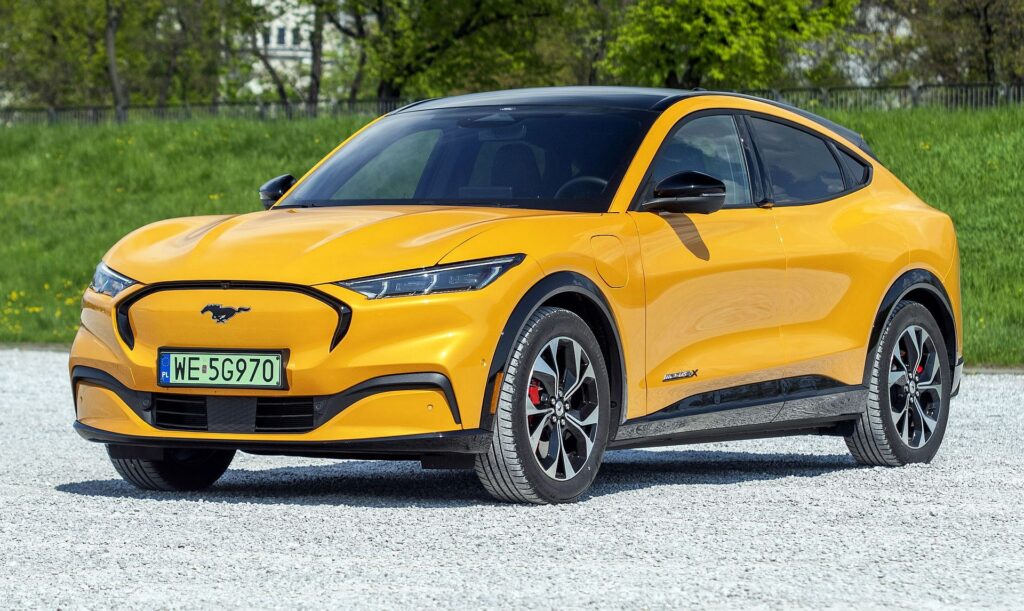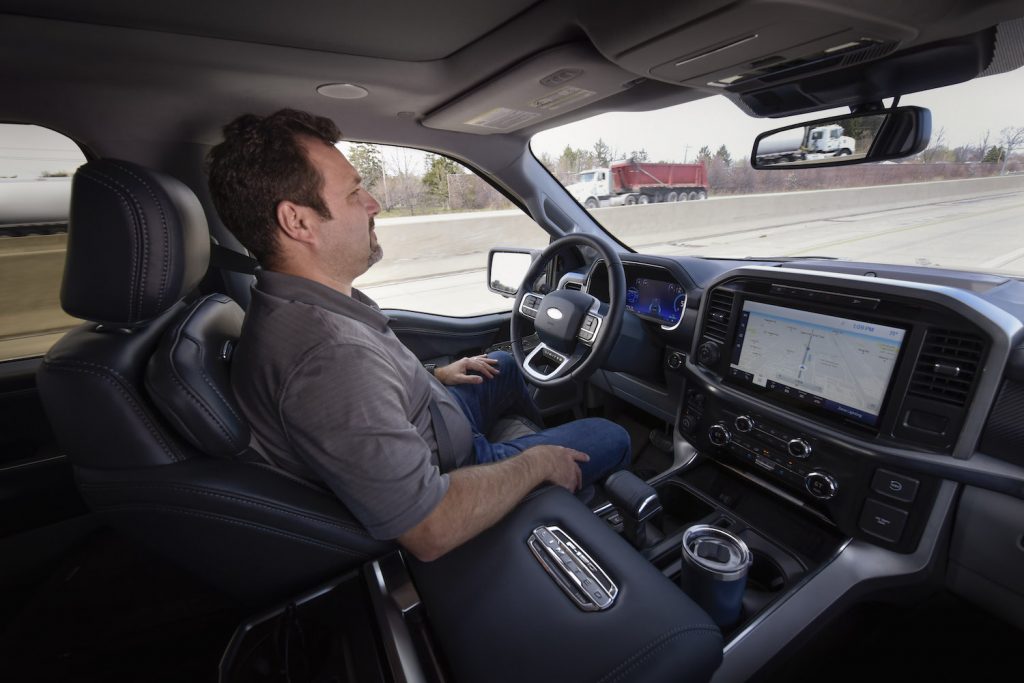Table Of Content
- Ford’s hands-free BlueCruise feature is now available as a monthly or annual subscription
- Ford increases BlueCruise subscription to $800 per year
- Works With the Driver, Not Against
- We check out how the new system works in a 2023 Mustang Mach-E.
- Mercedes positions S-Class as pinnacle of tech, luxury
- Ford’s BlueCruise hands-free system to cost $600 for 3 years

BlueCruise worked well during our preliminary evaluations on a Mustang Mach-E rented from Ford. The system is easy to activate because it takes only a single press of the cruise control button on the steering wheel to simultaneously engage the ACC and LCA. After that, all the driver has to do is stay attentive, ready to take over the steering on certain curvy sections of highways and manage the little stuff, such as steering to avoid potholes and manually adjusting the ACC’s speed, if they wish.

Ford’s hands-free BlueCruise feature is now available as a monthly or annual subscription
The new payment structure will first come to all trims of the Ford Mustang Mach-E and will soon be available to all 2024 model-year vehicles where BlueCruise is available, like the F-150 Lightning, Ford F-150, and Ford Expedition. The Essential Guide for MenThe Manual is simple — we show men how to live a life that is more engaged. As our name implies, we offer a suite of expert guides on a wide range of topics, including fashion, food, drink, travel, and grooming.
Ford increases BlueCruise subscription to $800 per year
CR Rates Active Driving Assistance Systems - Consumer Reports
CR Rates Active Driving Assistance Systems.
Posted: Tue, 17 Oct 2023 07:00:00 GMT [source]
Ford’s marketing of BlueCruise as a “hands-off highway driving experience” is potentially misleading to consumers. People may be confused or feel misled when they find out that BlueCruise wants them to have their hands on the steering wheel quite often on curvier sections of highway. Many customers may assume “hands-free” actually means “hands-free at all times,” and in our experience so far, that simply isn’t the case with BlueCruise, even on premapped sections of divided highway. BlueCruise 1.2 improves upon an already very good driver assist system which was recently rated the best ADAS by Consumer Reports.
Works With the Driver, Not Against
We just evaluated the new Ford BlueCruise active driver assistance system on a 2021 Mustang Mach-E electric vehicle and came away with mostly positive feelings. The system can allow for hands-free driving on sections of premapped divided highways, automating the vehicle’s steering, acceleration, and braking for the driver. It stands out for its driver monitoring and appropriate warnings when driver attention appears to have wandered, plus it effectively encourages collaborative driving. BlueCruise is a Level 2 system, meaning the vehicle controls major functions like acceleration and braking as well as lane centering and automatic lane changing. But while drivers can take their hands off the steering wheel and their feet off the pedals, they need to keep their eyes on the road and be ready to take control at a moment’s notice. Ford said that BlueCruise-equipped vehicles have already traveled over 100 million miles.
We check out how the new system works in a 2023 Mustang Mach-E.

Ford BlueCruise is also available with a three months free trial if you want to figure out if it’s worth it. Currently, Mercedes is the only car manufacturer to have a level 3-certified vehicle on the road in North America. Back when I first tried BlueCruise — in the guise of its Lincoln ActiveGlide version, on the 2022 Navigator — I was generally hopeful, if a little underwhelmed in places. Ford's system arrived when GM's Super Cruise had already seen a number of updates, not least the two headline talents in this version 1.2. That, plus a number of unexpected deactivations in highway corners, left me expectant that Ford would refine the experience using over-the-air (OTA) updates. “But not on boring, straight stretches of highway or in stop-and-go traffic.” In those situations, BlueCruise can automate the steering, braking, and accelerating for you pretty well.
This is Tesla’s riveting fix for recalled Cybertruck accelerator pedals
But although pressing the cruise control buttons turns the system “on,” the hands-free aspect won’t necessarily engage immediately—sometimes it does; other times it can take a few seconds to a couple of minutes. The system has to be on a section of divided highway that it deems safe for hands-free driving. The driver will know the hands-free mode has been engaged when the instrument cluster background turns from white to blue, while showing a steering wheel with the words “hands-free” below it.
Mercedes positions S-Class as pinnacle of tech, luxury
Ford makes it easier to opt in or out of hands-free driving - Hagerty Media
Ford makes it easier to opt in or out of hands-free driving.
Posted: Tue, 15 Aug 2023 07:00:00 GMT [source]
The system uses a driver-facing infrared camera perched atop the steering column that monitors the driver’s eyes and head gaze. The driver monitoring works effectively at detecting when the driver is looking away from the road, and it was not thrown off by sunglasses or a face mask. We’re happy with Ford’s decision to utilize a driver monitoring camera to ensure that the driver is paying attention to their surroundings any time the system is active, whether on highways or secondary roads. One night when we were entering a construction zone and our lane was being closed, the system failed to recognize that and issued no warnings whatsoever.
Ford’s BlueCruise hands-free system to cost $600 for 3 years
We've seen hands-free highway assist systems arrive on cars from Nissan, for example. The all-electric Ariya can do the same lane- and speed-holding as BlueCruise, though currently lane maneuvers are completed manually. Ford's system feels like a sensible, fairly conservative driver from behind the wheel. There's a definite pause, as BlueCruise does the positioning math, and it's enough to miss narrower gaps that human drivers might feel confident taking advantage of in order to get out from behind a slow-moving truck. On the plus side, even if you're adjacent to said truck when you hit the turn signal, BlueCruise will generally wait for a gap to clear rather than instantly canceling the move. BlueCruise's driver-facing interface is clean and makes good use of the Mustang Mach-E's relatively small cluster display.
If the system detects that there isn't enough room to safely execute the lane change it will cancel the request and display not possible after about ten seconds. Tap the turn signal — you don't have to press it all the way, and if you do, it won't auto-cancel once the lane change maneuver is complete — and a "Preparing lane change" message appears. A second or two later, assuming there's nothing in the adjacent lane, and BlueCruise moves across. Another graphic showing the direction of the maneuver appears while that's happening. From behind the wheel of a 2023 Mustang Mach-E Select, though, I'd say it's worth the wait.
After spending a week in the Mustang Mach-E, covering roughly 1,000 miles, including conducting the InsideEVs 70 mph range test, we noticed a substantial improvement over BlueCruise 1.0. The improvements weren't limited to the new features, but also to how well the Mustang Mach-E maintained its position in the lane, reducing the amount of lane wandering (sometimes called "ping-ponging") that we observed with BlueCruise 1.0. Previously referred to as Active Drive Assist, the feature will go live in the third quarter on Ford’s Mustang Mach-E crossover and F-150 pickup. Ford said Wednesday that BlueCruise software, activated through an over-the-air-update, will cost $600 for a three-year subscription, on top of the price of the hardware that varies by vehicle. Despite all the hype around autonomous driving, the reality is that we're still a long way from cars that can operate themselves completely. Just how long you can look away depends on a number of factors, but generally after a few seconds of inattention you'll get an audio warning and a message displayed on-screen.
In practice, I noticed it most when BlueCruise suddenly overruled the speed I'd set it to. Certainly, I can't argue with being reminded that I was exceeding the current limit — which the system will still allow in hands-off mode — but suddenly cutting the target pace without warning felt like a problematic way of communicating it. That was particularly the case when it led to the Mustang Mach-E slowing aggressively while I had another vehicle close behind me. Ford says that more extreme lane bias will prompt an on-screen message, explaining what's happening, but I never saw that appear in my test driving.
The inside scoop on the all-new Westfalia Wave camper vanWhile Westfalia made a name for itself by customizing VW buses in the 1950s, its latest project takes a surprisingly different tack. The Wave is based on the tried-and-true Ram Promaster 3500S platform with a 3.6L V6, pushing 276 horsepower through a nine-speed automatic transmission. Westfalia makes good use of the van's 20.7-foot bumper-to-bumper length, allowing for tons of space for sleeping, cooking, storage, and even showering. Ford recently introduced a new appearance option for the 2024 Mustang Mach-E GT, which will soon be available for preordering.
BlueCruise feels far more mature and stable than when it did when I first tested the technology. Though my hands and feet may have been poised and ready, the only times I actually needed to get involved were when I intentionally triggered the attention monitoring system by making it appear like I was looking away. That, for example, could already change lanes for you without the system deactivating; these days, it can automatically do so if you find yourself stuck behind slower traffic. GM's system can also be used in towing situations, and the automaker boasts more than 200,000 miles of compatible roads. Both Ford and GM are working on versions of their tech that can do unsupervised Level 3 highway driving, though for the moment that's still beyond either Super Cruise or BlueCruise. But a key reason BlueCruise works so well is that the driver has to pay attention to the road.
The system will be coming to the 2022 Expedition Platinum soon, as well as the upcoming F-150 Lightning EV pickup. A Ford spokesman told us BlueCruise would be heading to more vehicles, as well, but declined to give specifics as to which models, and the time frame. We asked Ford representatives what parameters cause the system to suddenly switch out of hands-free mode, and were told it could be a number of things, from overly curvy lanes to unclear lane lines.


No comments:
Post a Comment